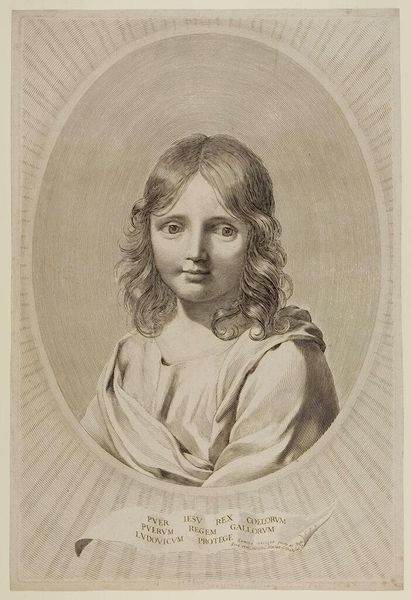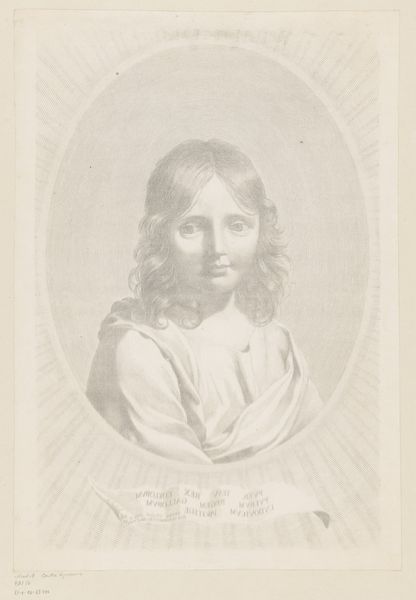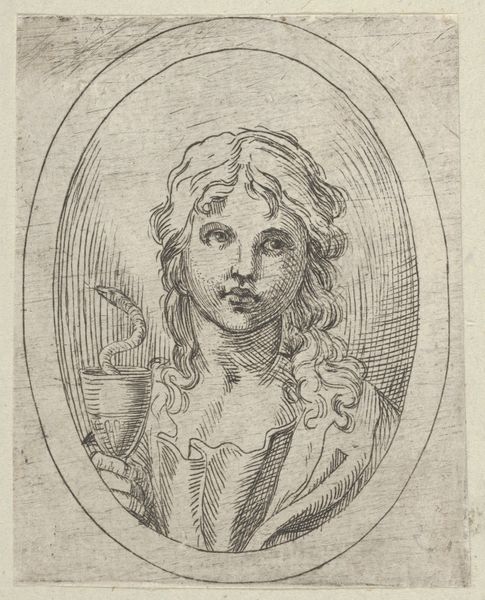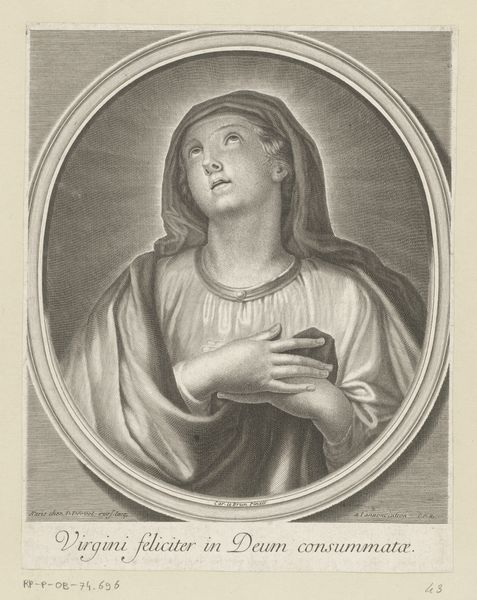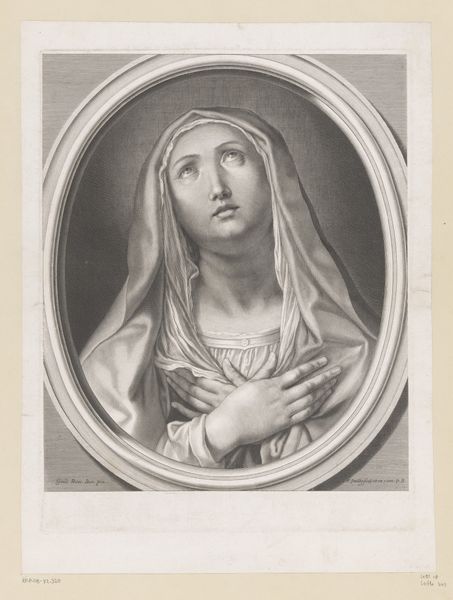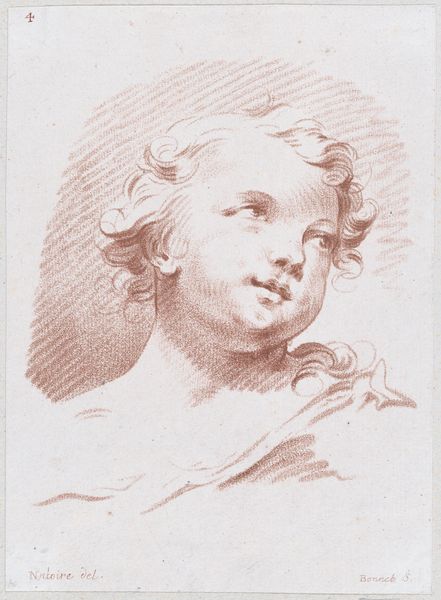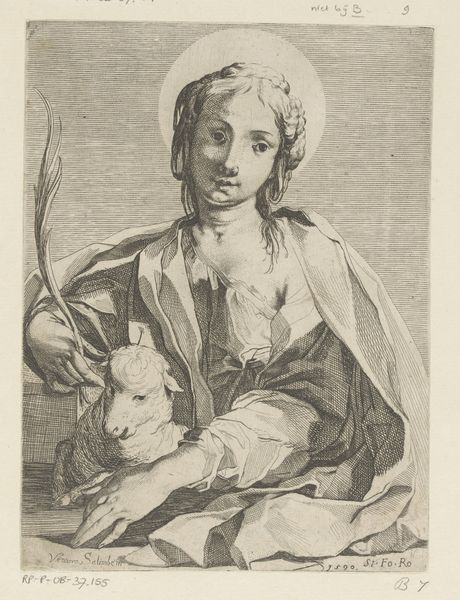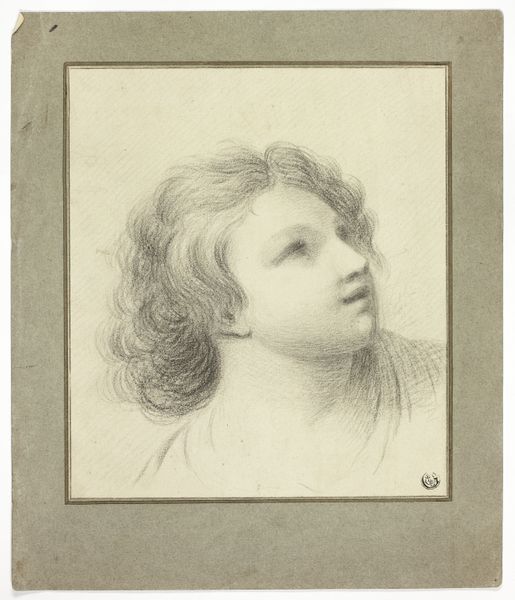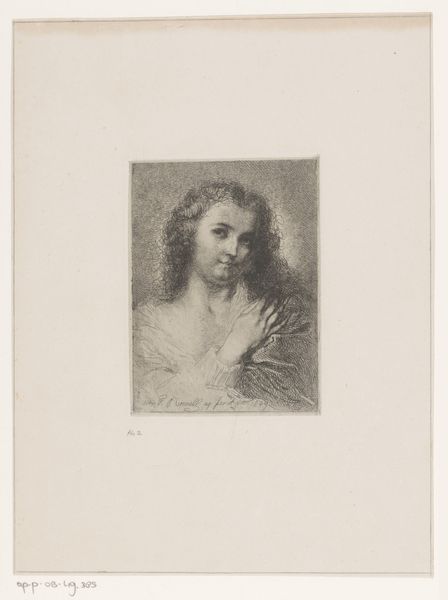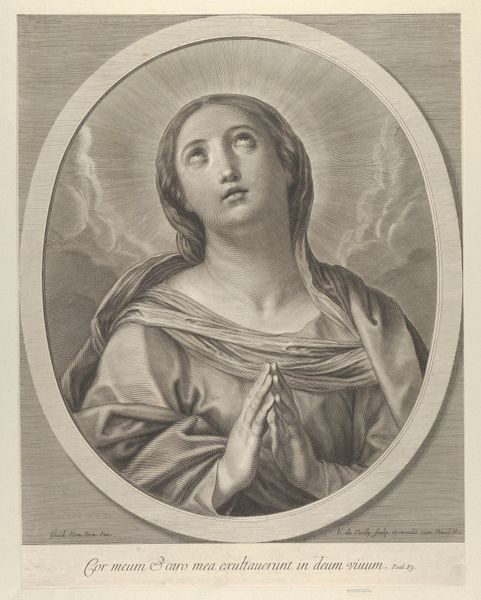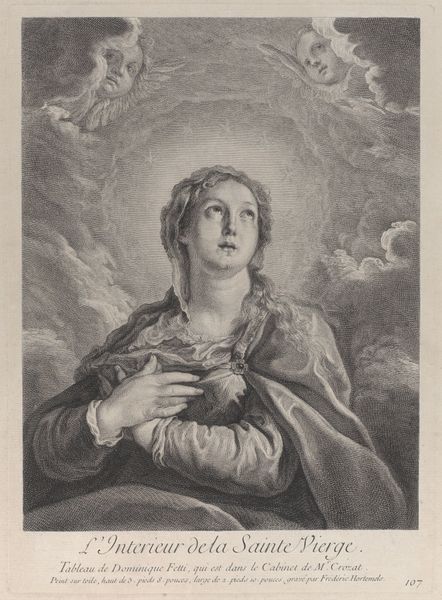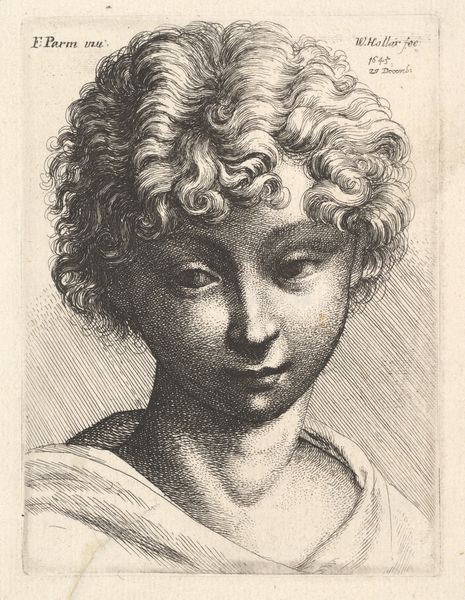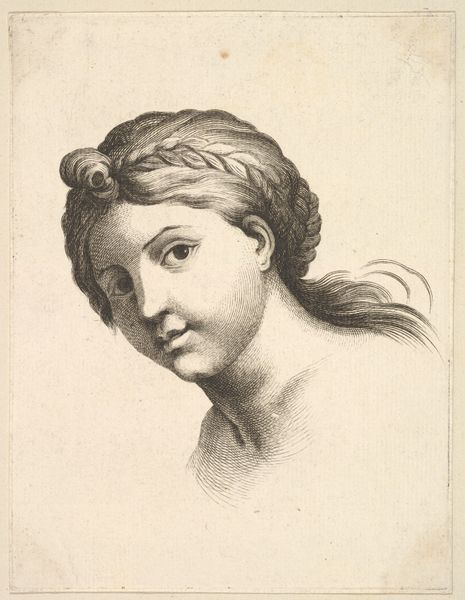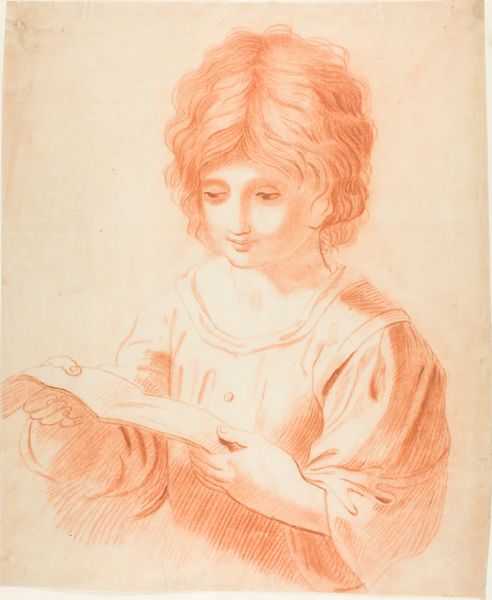
drawing, print, engraving
#
portrait
#
drawing
#
baroque
# print
#
portrait drawing
#
engraving
Dimensions: sheet: 17 5/16 x 11 7/16 in. (44 x 29 cm)
Copyright: Public Domain
Curator: Look at this fascinating print, “Bust of Jesus as a Child in an Oval,” dating back to the period 1600 to 1688, and attributed to Claude Mellan. Editor: Immediately, the smoothness of the face within all that detail in the lines, the radiant halo behind the figure, gives the piece a sort of dreamy, almost ethereal quality. Curator: It is definitely a feat of technical skill, typical of baroque engraving. Mellan was known for his technique of using a single line, varying its thickness to create shading and form. In terms of reception, these kinds of devotional images reinforced religious and social norms of the period. Editor: Agreed, that line work is intense, yet creates this surprisingly soft effect. It speaks to the historical role of religious imagery, often commissioned and circulated as a tool for both piety and control. What's more, notice the Latin inscription at the bottom? I think it calls on the child Jesus to protect Louis. Curator: Good observation. This reminds us how art of the period was often interwoven with political and social power structures. Works like this weren't just expressions of religious devotion, they also functioned within patronage systems and were influenced by the dominant political concerns. Mellan, like many artists, navigated these complexities to produce works that suited the demands of his patrons, or that served their symbolic interest in certain events. Editor: It's a stark reminder that images we view in a hushed gallery once had very active roles. And the expression itself — so serene, almost detached, perhaps served as a counterpoint or idealization in chaotic times. How was this particular piece received, considering the artist's context? Curator: Mellan achieved a great degree of notoriety. But given his status as the protégé of Peiresc, a noted patron and intellectual, he quickly adapted into powerful art markets and artistic networks of Paris. His reputation helped in securing royal commissions later. I wonder what Louis would have thought of it! Editor: Seeing art in its total historical, political, and spiritual milieu certainly deepens the conversation for all involved. Thanks! Curator: Indeed. Considering these prints today reminds us of how complex historical reception is, while encouraging questions.
Comments
No comments
Be the first to comment and join the conversation on the ultimate creative platform.
